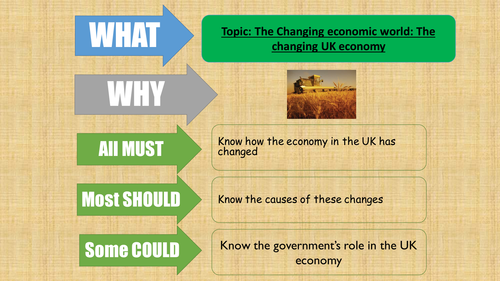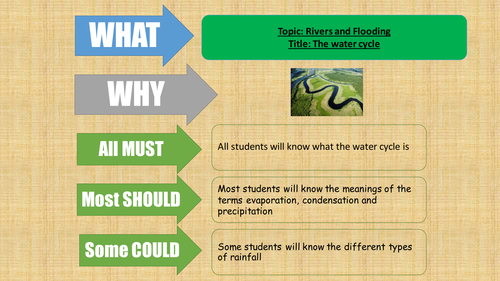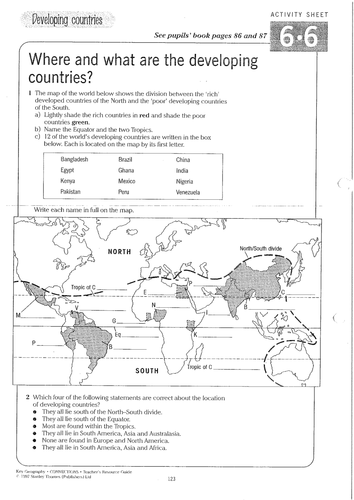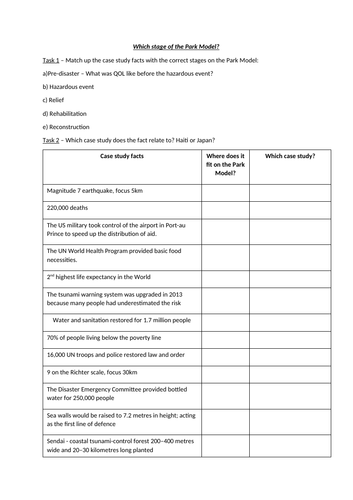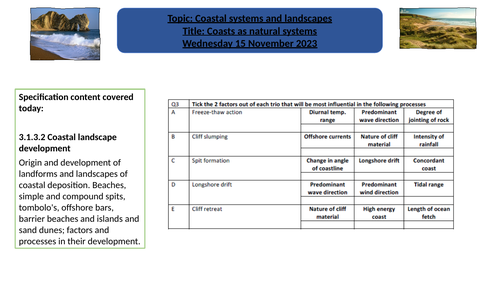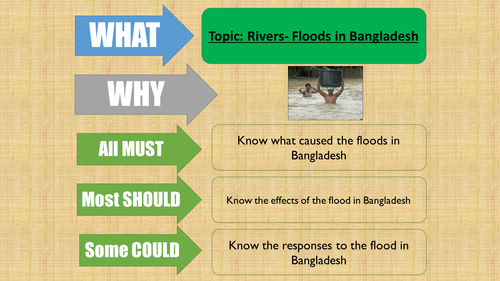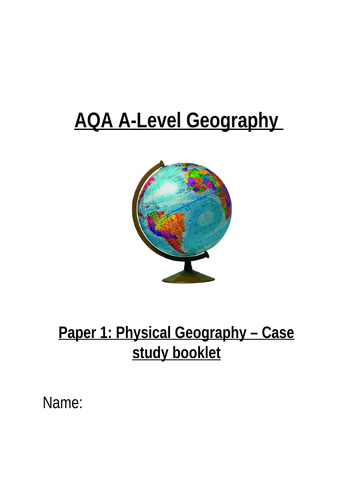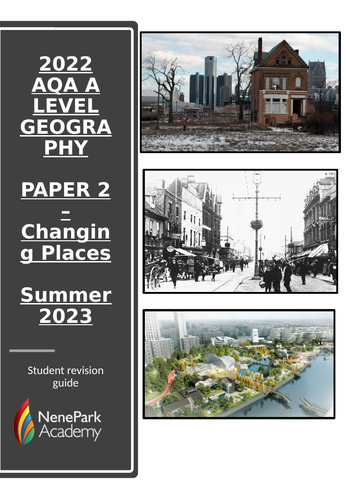
292Uploads
167k+Views
174k+Downloads

Rivers and flooding - full set of lessons and assessment - KS3
Fully resourced lessons created for non-specialists to teach the rivers and flooding unit to year 8. All resources included. A huge variety of resources included for example mysteries, card sorts, coding tasks, case studies, exam questions, assessment, videos, pop-ups, dominoes, fill in the gaps tasks and lots more.
Lesson 1 - The water cycle
Lesson 2 - Pop-up drainage basin
Lesson 3 - River processes
Lesson 4 - Pop up waterfall
Lesson 5 - Meanders
Lesson 6 - The river Tees
Lesson 7- Flooding
Lesson 8 and 9 - Boscastle
Lesson 10 and 11 - Bangladesh
Lesson 12 - Flood management
Lesson 13 - assessment

KS3 - The development gap fully resourced powerpoints, resources and assessments
KS3 - The development gap fully resourced powerpoints, resources and assessments. Over 30 resources included.
Gives students the background information needed to succeed at GCSE - new AQA Geography specification.
Lesson 1 - Our unequal world
Lesson 2 and 3- Measuring development
Lesson 4 - The Demographic Transition Model
Lesson 5 - Uneven development - wealth and health
Lesson 6 - Free and fair trade
Lesson 7 - Reducing the gap - tourism
Lesson 8 - Reducing the gap - aid
Lesson 9 - Reducing the gap - Nike
Lesson 10 - Blood diamonds
Lesson 11 - Feast or famine
Lesson 12 - assessments

Living World - Revision quiz - Q and A - AQA GCSE Geography
A revision quiz for students to complete individually or in pairs.
Questions and answers included
30 marks available in total

Park Model of response - A-Level hazards
Two activities included:
Evaluation of the Park model - Students sort the statements into the advantages and disadvantages and add evidence from case studies
Park Model - which stage worksheet
Students decide what stage of the model each statement fits and which case study it comes from - Haiti or 2011 Japanese earthquake

AQA A LEVEL GEOGRAPHY 2022 CHANGING PLACES REVISION CARDS - QUESTION AND ANSWER
Written using the AQA specification content wording for the 2022 advance information.
28 question and answer revision cards covering the following:
Outline the concept of a place.
Explain the difference between a sense of place and place perception.
Outline how places are important in human life and experience
Outline how topography influences the character of a place
Outline how physical geography influences the character of a place
Outline how land use influences the character of a place
Outline how economic characteristics influence the character of a place
Outline how endogenous factors shape the character of a place
Outline how shifting flows of people can lead to demographic change.
Outline how shifting flows of ideas and resources can lead to demographic change.
Outline how flows of money and investment can lead to changes in the economic characteristics of a place.
Outline how changes in flows of people can influence social inequality .
Outline how the characteristics of place are shaped at a regional scale.
Outline how the characteristics of place are shaped at a national scale.
15.Outline how the characteristics of place are shaped at an international scale.
Outline how past and present connections influence the character of a place.
Outline how place marketing is used to change people’s perceptions of a place.
18.Outline how rebranding is used to change people’s perceptions of a place.
Outline how re-imaging is used to change people’s perceptions of a place.
20.Outline how corporate bodies influence our perceptions of place.
21.Outline how community or local groups influence our perceptions of place.
Outline the difference between a media place and an experienced place.
Outline the difference between location and locale.
Evaluate the use of census or statistical data in representing a places.
Evaluate the use of cartography/maps in representing places.
Outline how geospatial data can be used to present place characteristics.
Evaluate the use of diverse media in representing place.
‘The changing character of a place over time is more effectively represented by statistical and cartographical sources than artistic sources such as painting, poetry and photography.’ With reference to either your local or distant place, critically assess the extent to which you agree with this statement.

Hazards AQA A Level Geography - Complete revision guide - Summer 2023
Complete revision guide covering all aspects of the AQA A-LEVEL Geography specification.

AQA Geography 2022 Paper 1 - PLC
A PLC for students to complete after they have completed the paper 1 exam. Students RAG rate the sections based on their marks for each question.

Japanese Earthquake and tsunami fully resourced lesson
Fully resourced lesson about the Japanese earthquake (2011)
Double sided case study sheet with activities for students to complete.

AQA A LEVEL coasts fully resourced lessons - 15 lessons
Fully resourced lessons with a wide range of activities for students to complete:
Retrieval practice
Exam questions, mark schemes and some model answers
Sorting activities, debates, crosswords, comprehension tasks.
All lessons linked to the specification.
Bundle

Hot deserts - Planet Earth 2 - Worksheet
A worksheet to complete for the hot deserts episode from Planet Earth 2.
Bundle

AQA Geography 2016 - The development gap and the changing UK economy. 20 fully resourced lessons
Development gap resources:
11 fully resourced lessons looking at the development gap unit for the new AQA Geography GCSE.
Huge variety of different resources available. Exam question at the end of each lesson. Made for non-specialists so really easy to follow.
Lesson 1 - Our unequal world
Lesson 2 - Measuring development
Lesson 3 - The DTM
Lesson 4 - Changing population structures
Lesson 5 - Causes of uneven development
Lesson 6 - Uneven development - wealth and health
Lesson 7 - migration
Lesson 8 - reducing the gap - aid and trade
Lesson 9 - reducing the gap - free and fair trade
Lesson 10 - reducing the gap Debt relief
Lesson 11 - reducing the gap - tourism in Jamaica
Changing UK economy resources
A collaboration of lessons created for the ‘Changing UK economy topic’ from the new AQA geography specification. I have included a large range of resources e.g. mysteries, market place tasks, desk mats, dilemmas, case study sheets, mind maps, research tasks, graphs, card sorts and lots more. I have also included practise exam questions to go with each lesson.
The lessons are as follows:
Lesson 1 - Changes in the UK economy
Lesson 2 - A post industrial economy
Lesson 3 - UK science and business parks
Lesson 4 - Environmental impacts of industry - includes examples
Lesson 5 - Changing rural landscapes
Lesson 6 - Changing transport infrastructure - roads, ports, airports and railways
Lesson 7 - The north south divide
Lesson 8 - The UK in the wider world
Lesson 9 - The UK in the wider world - EU and commonwealth

Restless Oceans SOW - Fully resourced with PowerPoints, SOL, assessments and mark schemes
13 hours of fully resourced lessons about oceans - created for non-specialists so easy to follow. A huge variety of resources available.
Lessons are as follows:
Lesson 1 - Oceans and continents
Lessons 2 and 3 - Ocean ecosystems
Lesson 4 - Creatures of the deep
Lesson 5 - The BP oil spill
Lesson 6 - The Pacific Garbage Patch
Lesson 7 and 8 - Sustainable fishing
Lesson 9 - Introduction to coral reefs
Lesson 10 - threats to the coral reefs
Lesson 11 - Climate change and the oceans
Lesson 12 - Assessment
Lesson 13 - FIT lesson

Coastal management - Lyme Regis
Fully resourced lesson - case study sheet for students to complete, exam question, video, map task, newspaper article and sorting task

The Indus Basin Irrigation system lesson with example study sheet - AQA Geography GCSE
Fully resourced lesson

AQA A Level Geography - Physical Geography case studies booklet
A comprehensive case study booklet for the Hazards and Coasts sections of Paper 1 - Physical Geography. Case studies included:
Coastal systems and landscapes:
• Case study(ies) of coastal environment(s) at a local scale to illustrate and analyse fundamental coastal processes, their landscape outcomes as set out above and engage with field data and challenges represented in their sustainable management. – Holderness Coastline
• Case study of a contrasting coastal landscape beyond the UK to illustrate and analyse how it presents risks and opportunities for human occupation and development and evaluate human responses of resilience, mitigation and adaptation - Odisha
Hazards:
• Impacts and human responses as evidenced by a recent volcanic event – **Mt Etna **
• Impacts and human responses as evidenced by a recent seismic event – Japan (2011)
• Impacts and human responses as evidenced by two recent tropical storms in contrasting areas of the world (Sandy and Winston)
• Impact and human responses as evidenced by a recent wild fire event.(Alberta wildfires)
• Case study of a multi-hazardous environment beyond the UK to illustrate and analyse the nature of the hazards and the social, economic and environmental risks presented, and how human qualities and responses such as resilience, adaptation, mitigation and management contribute to its continuing human occupation. (Haiti)
• Case study at a local scale of a specified place in a hazardous setting to illustrate the physical nature of the hazard and analyse how the economic, social and political character of its community reflects the presence and impacts of the hazard and the community’s response to the risk - Montserrat

AQA A Level Geography Changing places Complete revision guide - 2023
Full revision guide for the Changing places topic.

Geography Continental Drift theory lesson - Progress in Geography
A fully resourced lesson on the theory of continental drift.
Students are introduced to Wegener’s theory of continental drift.
They then complete a mystery task in groups to summarise the evidence in order to answer the lesson title -Why do continents fit together like jigsaw pieces.
Students then create an annotated map showing the evidence and evaluate the theory.


